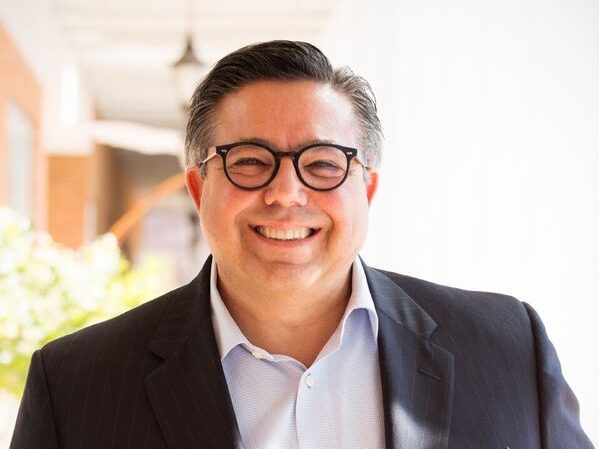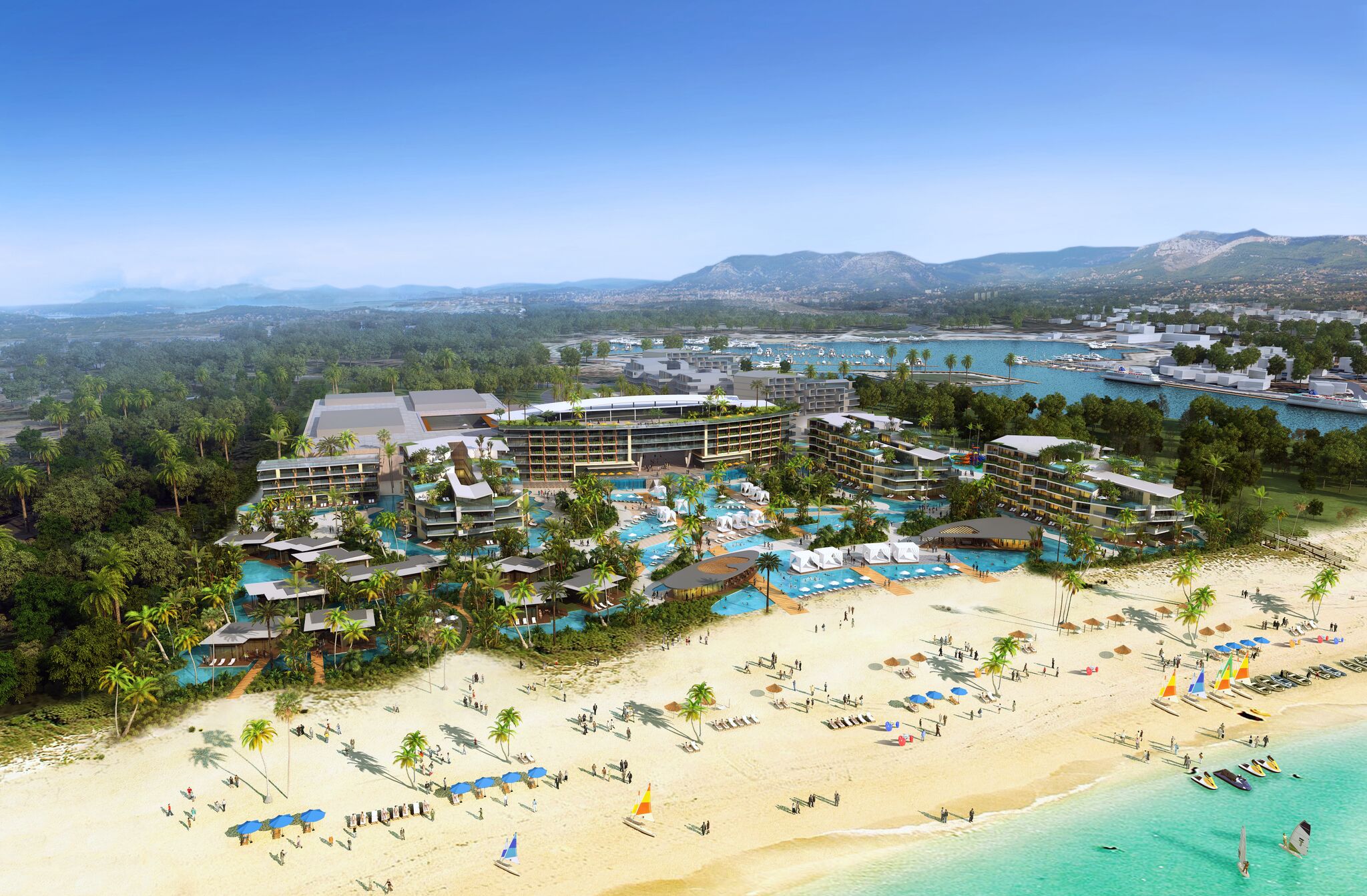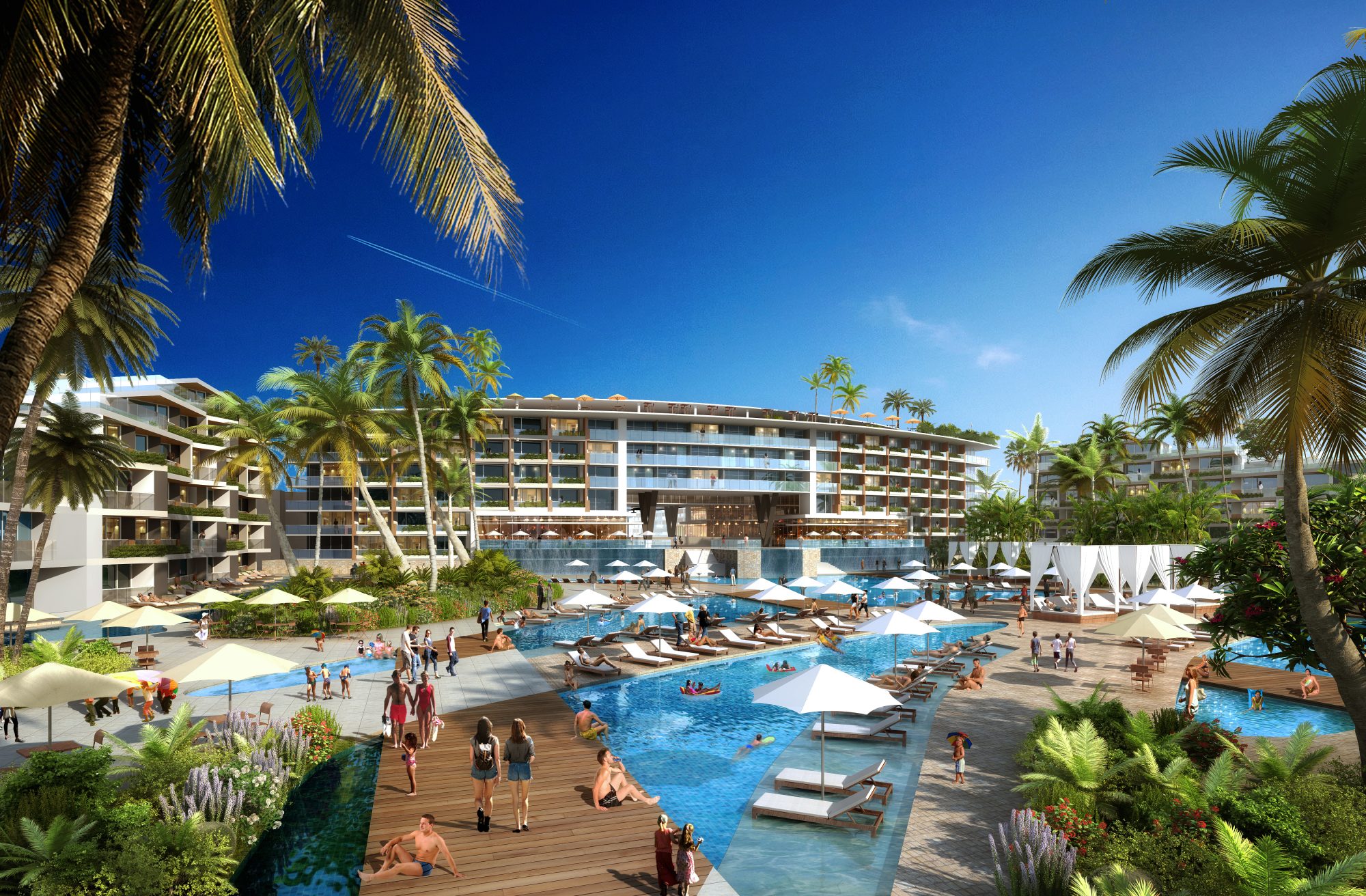The Architecture of the Exotic: Designing Luxury Resorts
Nunzio Marc DeSantis Architects specializes exclusively in hospitality design. In a conversation with CPE, he delves into the current meaning of luxury and whether the architecture of holiday resorts grows organically from a sense of place.
By Beata Lorincz
Nunzio DeSantis’ interest in hospitality architecture dates back to his college years. In 2017, after 25 years of working in the field at HKS, he managed to fulfill his dream of opening a practice together with his son Marc. Setting the stage for the creation of long-lasting memories through carefully designed spaces—sometimes in wildly exotic locations—drove this father-son duo towards envisioning inspiring hospitality architecture.
In an interview with Commercial Property Executive, DeSantis discusses his experience in the hotel industry and shares his sources of inspiration, the challenges he faces, as well as the current trend of designing lobbies as spaces for socialization.
Your architecture firm is solely dedicated to hospitality design. What attracted you to the field?
DeSantis: At Nunzio Marc DeSantis Architects, we are firmly rooted and dedicated to the pursuit of hospitality and leisure projects. While pursuing my graduate degree, my thesis project was ‘The Study of Hotel Design.’ However, following graduation, thirty-five years ago, my career began at a large architectural firm that worked on just about every type of architecture—one day I would be working on an office building, the next day a school, the day after that possibly a church or hospital. Every so often the firm would be selected to design a hotel project and when I was lucky enough to be assigned to the hotel, I got a taste of what hospitality design was all about and knew I wanted more—I always had a passion for placemaking, memory-curating and experience, founded in architecture and laced with beauty, fashion and service.
When I eventually became a partner at my previous firm, HKS, I founded a practice within the organization dedicated to hospitality. Over the 25 years that I lead the hospitality studio, it became very personal to me and my family. My wife, my son and my nephew are all architects and my daughter is a graphic branding professional, working in the hospitality industry. All have worked, engaged or helped at some time with the hospitality studio at HKS.
How did the story of your practice start?
DeSantis: I always had the dream of starting a firm with my son Marc. On June 1, 2017 we launched our architectural design firm, with the intention of only working within the hospitality industry. Hence the name: Nunzio Marc DeSantis Architects.
There isn’t a more rewarding genre of architecture for Marc and I. We work with extraordinary individuals who have traveled the world, brands that fly the most recognized flags and an experienced team of the most creative and inventive designers that craft and curate spaces that create lifelong memories. Whether urban, resort, luxury, entertainment, business or exotic hotels, we cherish the opportunity to design places for people that simply astound. So Marc and I decided to pursue excellence, be courageous and be tenacious toward quality of design. We could not be all of these things if we only occasionally worked on a hospitality project, the way it happens at larger firms.
Which are the main sources of inspiration when it comes to envisioning an exotic resort? Is local culture one aspect you take into consideration?
DeSantis: For me, exotic locations are easier to design than non-exotic locations. We look for inspiration locally to influence and direct us to our results. Inspiration comes by way of the local people and their culture—the clothing, food, architecture, flowers, colors, landscape and skies of the surrounding site. We also consider materials that we can source locally instead of import, to create a more authentic bond to the area and its people. Inspiration can be literal, but I much more prefer it when the place creates an idea or direction and then design takes over through adaptation and editing. This is not only a visual experience, but also an intellectual one for our guest.
What are the greatest challenges in luxury hospitality design?
DeSantis: I think one of the greatest challenges facing luxury hospitality design is the evolving and changing definition of “luxury.” Luxury is an elusive target in design today—what one person sees as luxurious, another may see as cliché. Our clients are more and more well-traveled and eclectic in their vision and expectations. We believe we are the story teller for our clients through the design we come up with by interpret their wishes. Our job has become increasingly harder in finding pathways into the minds and visions of our clients. Then and only then, we begin to distill, elevate, mold and craft design into unique and memorable moments that inspire and lift the owners’ and guests’ imagination.
 Is there a recent project you would like to zero in on?
Is there a recent project you would like to zero in on?
DeSantis: The Chatwal Lodge, a resort in the Catskills of New York, is one that we are working on with Dream Hotel Group. It will be the first expansion of the Chatwal brand of hotels outside of New York City, where the flagship property resides. The resort will feature 50 accommodations on 23 acres, including private villas and suites, and high-end culinary experiences, crafted and managed by a renowned chef to be announced soon.
We also play a role in the development of the Caesars Palace Luxury Resort in Puerto Los Cabos, Baja, Mexico. The $200 million non-gaming luxury beachfront hotel will break ground in the first half of 2019 and, when complete, will feature 500 rooms and suites, a 40,000-square-foot convention center, a 25,000-square foot full-service spa, three fine dining restaurants, an array of amenities including an entertainment venue, pools, cabanas, fitness center, tennis courts and access to the two signature golf courses.
In my previous role at HKS, I witnessed firsthand the transformation of Cabo San Lucas, Mexico, from its former reputation as a party-only destination into the premier luxury getaway it is known as today, through designing projects including Las Ventanas al Paraíso, One&Only Palmilla, Esperanza, Auberge Resorts Collection, Secrets Puerto Los Cabos Golf & Spa Resort, Rancho San Lucas and Grand Solmar Land’s End Resort & Spa. This area of Los Cabos is close to my heart and am so thankful to play a part in its continued development.
You have projects throughout Central and North America. How do the various landscapes impact design?
DeSantis: The natural influence is essential in so many ways and is a requirement of good design. I have completed work throughout the U.S., from the Northeast to the Southwest and from the Northwest to the Southeast. The site and terrain, the trees, the sky, the water, the stars and the sun are all tremendous influences over project design.
- When in tropical climates and beach locations, we use breeze ways between buildings to capture natural breezes for cooling. We incorporate landscape to provide living fences, green walls between units and add private locations to provide moments of tenderness, privacy and exclusivity.
- In the desert, we design buildings with large overhangs and introductions of water to provide a cooling escape from the sun.
- When we are designing mountain resorts, we think about snowfall and how that impacts and rests on our buildings. We include larger closets knowing the importance of wearing layers and accommodate heavier jackets that guests are packing. We design outdoor living spaces, even though it may be very cold or snowing. We enhance the exterior experience with heated fireplaces and fire pits, and we include integrated heat systems to keep decks pleasant and usable.
What are the latest trends in luxury resort design?
DeSantis: Lobbies are forever changing in luxury resort design—cozy lobbies with more intimate spaces for socialization and building communities, rather than the large, mall-like experiences of years ago. Today, we see spaces that transform and leverage energy from one lobby area to the next. Further, food and beverage spaces have a soft edge and overflow, so the restaurant today lives in the lobby as much as it does facing inward. The celebration of drinks and the spectacle of food is transforming the hotel world. One avocado at a time.
Images courtesy of Nunzio Marc DeSantis Architects










You must be logged in to post a comment.